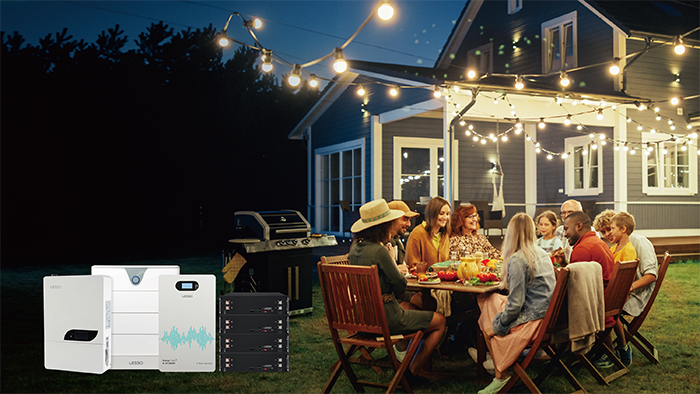When installing solar energy in the United States, you generally do not need to configure a separate battery, but rather parallel to the grid. Because the grid is equivalent to play the role of the battery: during the day, the solar power can not be used up, it will be delivered to the grid; at night the solar energy can not generate electricity, the power grid. A year down the road, the two sides of the total account: if your solar energy system delivered to the grid of electricity, more than your home with the grid of electricity, the balance is even sold to the grid. Only, the buyback price from the grid is a bit low. On the other hand, if you use more electricity from the grid than your solar system delivers to the grid, you still need to buy the difference from the grid at the same price as before.

When do you need to configure the battery
1. Supplemental electricity
Grid instability or frequent power cuts: If the grid in your area is unstable or frequent power cuts occur, the configuration of the battery can ensure continuous power supply.
Higher electricity prices during grid usage hours: Using stored electricity during peak electricity prices can reduce electricity expenses.
The above two cases, the solar energy system still need to parallel with the grid, just a special time, need to use the battery power, so its capacity does not have to be configured too large, can support 12 hours can be.
2. Independent power
No grid connection (off-grid system): In some remote areas not covered by the grid, the solar system is completely independent of the grid (off-grid system), the battery is obviously necessary for storing the electricity generated during the day, so that it can be used at night or when there is insufficient light.
In this case, the solar system is completely off the grid and needs to rely entirely on the battery for power during the hours when the solar system is unable to generate power, so its capacity configuration needs to be large enough to support at least 2-3 days.
Environmental requirements for storing batteries:
Temperature control: Batteries need to be stored in a relatively stable temperature environment to maintain efficiency and prolong service life.
Ventilation: Some types of batteries may generate heat or gases during charging and discharging, so good ventilation is required.
Dry and safe: The storage area should be dry to avoid moisture damage to the battery and should be inaccessible to children and pets to avoid safety risks.
Ease of access: For maintenance and inspection purposes, the battery should be placed in a location that is easily accessible.
Solar panel capacity: For a fully off-grid system, sufficient solar panel capacity is required to generate enough electricity, which will increase the initial investment cost.
Installation costs: The cost of installing the solar panel and battery system also needs to be considered.
Geographic location and sunlight conditions: This will affect the efficiency of the solar panels and the amount of power produced, which in turn will affect the required solar panel and battery capacity.
Battery Cost Measurement
The cost of the battery depends on its capacity, brand and type of grid connection. In addition to the cost of the battery itself, the cost of installation and system integration needs to be considered.
Let's assume a household with an annual electricity consumption of 10,000 kWh (10,000 kilowatt-hours). The average daily electricity consumption would be approximately 27.4 kWh (10,000 kWh / 365 days).
The unit cost of a battery depends on its type and brand. For example, the more common lithium-ion batteries on the market today cost about $500 to $1,000 per kWh.
Here are the separate measurements
1. Battery cost for supplemental power usage
Battery capacity requirements: If the battery is only used to cope with short-term power outages and high electricity prices, then it does not need to fully cover the average daily electricity consumption. Assuming 12 hours of backup power is required, the battery capacity requirement is approximately 13.7 kWh (27.4 kWh / 2).
Battery cost: The total cost of a lithium-ion battery, for example, ranges from $6,850 (500*13.7) to $13,700 (1000*13.7).
2. Lithium battery Costs for Standalone Electricity
Batteries need to have enough capacity to feed the electricity needs for a few days, especially during continuous cloudy or rainy days. Assuming that 3 days of standby power is required, then at least 82.2 kWh (27.4 kWh x 3 days) of battery capacity is needed.
The total cost is therefore between $41,100 and $82,200.
In summary
Installing Lithium battery brings more flexibility and independence to the solar system, but also additional costs and maintenance requirements.
Consideration of the need for batteries should be based on the demand for electricity, the financial situation, and the local power supply.







